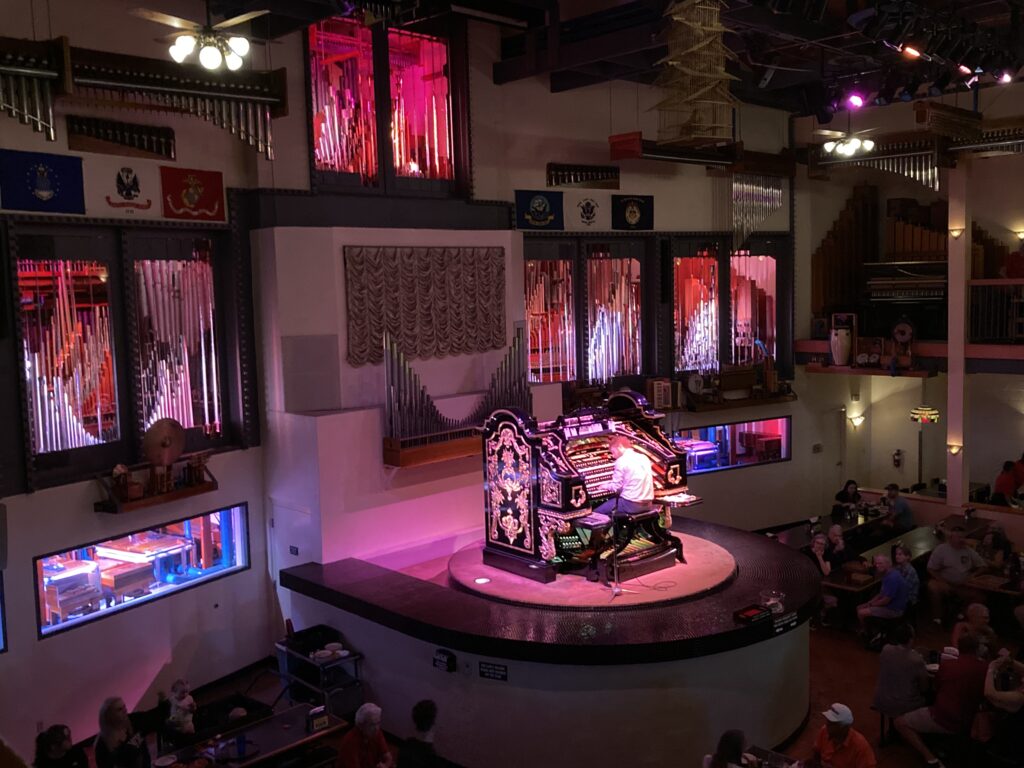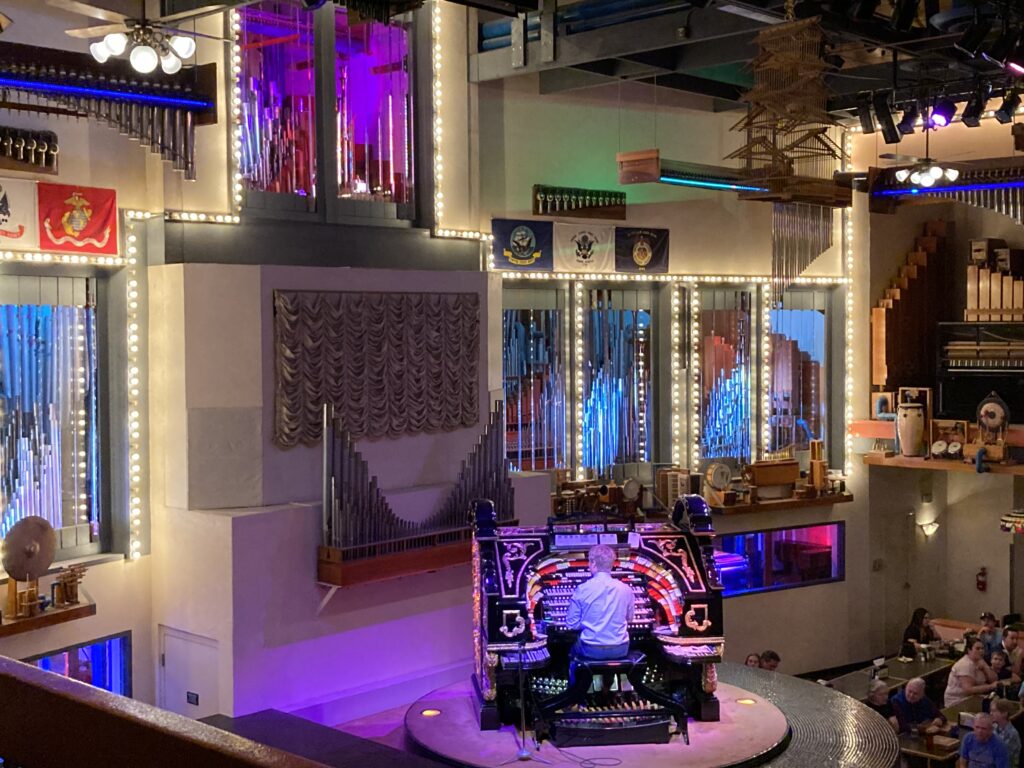While in Arizona last week I visited Organ Stop Pizza and I wrote a little bit about it yesterday. Today I’m writing about something else that I noticed with performance. In many of the songs the organist played, there was lighting changes:
The room was normally dark, and when he got towards ends of song and it had a big ending, he would lighten up the room for the finale, then darken it at the end. While these songs were songs that had more exciting endings, the lighting change end really signaled the crowd to clap and cheer louder.
This is a technique used in many theater shows, sometimes ending the trick with a blackout. I’m sure there’s a name for it in theater terms, I just don’t know it. However it’s a way to signal the end of a trick or routine that may have less off a definite and hard punctuation at the end.
The organist used the lighting very deliberately and very effectively. Personally I’m a pretty basic lighting guy, and that’s probably because I came out of stand up comedy rooms, and not theaters. However it’s something I would like to explore more.
-Louie


